Disclaimer: This article is written from the mindset of enhancing the absorption of anabolic hormonal supplement ingredients and drugs, but can be applied to nearly any type of ingredient that's difficult for the body to utilize.
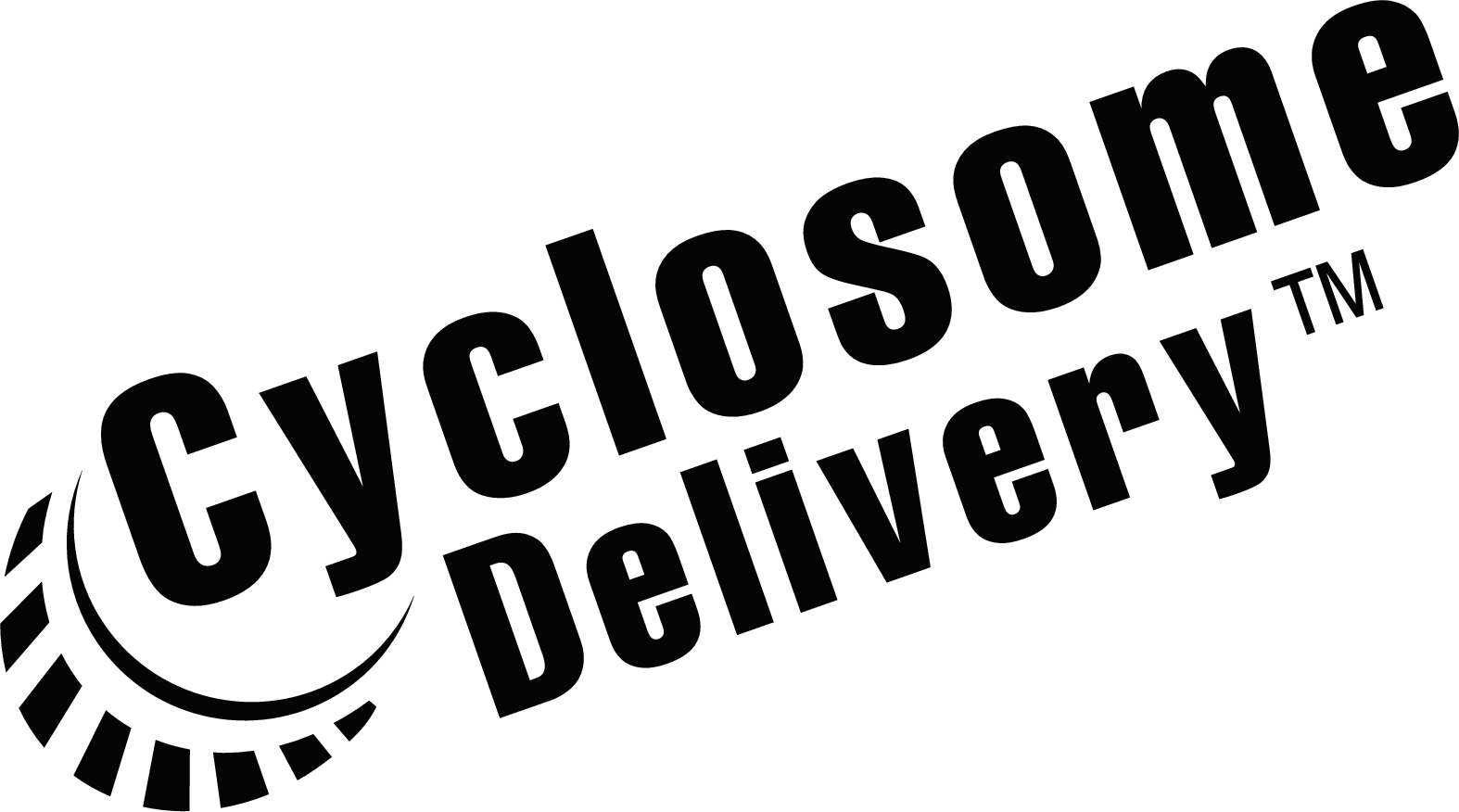
Cyclosome is a new supplement ingredient delivery technology made by Hi-Tech Pharmaceuticals that combines the forces of two other delivery systems. Before we get into it, we cover the why, how, and what in this article.
For most supplements, simply mixing them with water in a shaker bottle with water or juice is sufficient. But when it comes to certain ingredients, the body metabolizes them long before they get where they need to go, or disregards them altogether since it cannot absorb them.
We've always known this for compounds like curcumin and ginkgo biloba, but it's especially true for anabolic-type supplements and hormones like DHEA too. Simply swallowing a tablet may not be enough for serious results.
To make things worse, the most easily-absorbed muscle-builders have long been banned from the market, forcing users into questionable gray market areas to get what they want. It doesn't need to be this way, though.
Whether it's curcumin or a new DHEA metabolite, many ingredients just can't get past the small intestine when taken orally. That's most likely the reason why results from ingredients like 1-Andro or 4-DHEA never matched up with what theory dictates.
Stores can't legally sell the old easily-metabolized "muscle builders", so workarounds need to be found. This necessitates a delivery system to make sure your body is actually making use of what you put into it and not just flushing money down the toilet.
What’s the actual problem? A case of hydrophobia
As you know, we're mostly made of water, and water is critical to countless biological processes. Unfortunately, many of the supplement, drugs, and other ingredients are incredibly hydrophobic -- "water-fearing". These ingredients are repelled by water - you see this behavior anytime you try cleaning an oily pan with just water.[1]
Although humans are great at absorbing lipids, we're terrible at absorbing various other compounds that repel water. And as you may have guessed, many of the ingredients we're interested in lately are quite repulsive to water, and thus our digestive systems.
This presents an opportunity though. Certain delivery systems can either bind to or "encapsulate" these hydrophobic compounds and make them far more friendly to our small intestines for delivery - much like a Trojan Horse.
Why use a delivery system?
Delivery systems will yield two major benefits for us:
-
Improved ingredient levels in the bloodstream

A hydrophobic leaf in action. Imagine the leaf as your intestinal wall, and the water as a supplement/drug you want to take. We need to devise a way to 'Trojan Horse' the compound through the repulsive barrier. Image courtesy Wikimedia
Hormonal ingredients are most effective once they enter the bloodstream where they can interact with androgen receptors. The higher blood hormone levels get, the greater results you should get while on cycle, theoretically.
Think of it this way: if you're taking some type of DHEA ingredient at 100mg/day, but only 10% gets into your bloodstream, your body only has 10mg worth of product to interact with your androgen receptors. The remaining 90mg that isn't absorbed into the bloodstream simply goes to waste, ultimately limiting the amount used by the body and the amount of gains you can make.
To counteract this, we need a way to increase the amount of the ingredient that enters the bloodstream - without spending more money on higher doses - which leads us to the next point:
-
Limiting unwanted or undesirable effects
Addressing two glaring issues:
-
The first issue covers all hormones:
The greater the dose consumed the more potential there is for side effects. Going off our previous example, consuming 100mg/day of a compound yielded 10mg of active hormone, but in terms of anabolic effects the other 90mg had zero impact. However, that 90mg does have an impact on your vital organs, namely the liver and kidneys.
Basically, this means that for every 100mg you ingest, 10% is going to its intended "good" purpose destination, and 90% is going towards "waste treatment", which could lead to unwanted side effects, such as renal toxicity.
-
The second issue is specific to DHEA and its numerous isomers:
Excess DHEA can eventually make its way into estrogen. It's best to find the perfect dose and take as little as possible to achieve what we need.
In the body, DHEA converts to several different hormones, some of which are anabolic (beneficial), while the remaining are estrogenic (not beneficial). Research has shown that when crossing certain DHEA thresholds, additional DHEA taken above the usable amount by the body could get converted to estrogenic (negative) hormones.[2-4]
Based on this, it stands to reason that you'd want to utilize the minimum effective dose with the highest bioavailability possible to reap the best gains, while simultaneously limiting as much estrogenic conversion as possible.
-
But let's say this doesn't convince you that you need a delivery system when taking DHEA supplements. If you're wondering what happens when using these compounds sans delivery system, then...
When there’s No Delivery System
When supplements like 1-DHEA and 4-DHEA first hit the market they were nothing but a hormone in a capsule, no delivery systems whatsoever. Despite this, clinical studies still noted significant results.[5] But those results came at a cost as the title even declares: "PH supplement 3β-hydroxy-5α-androst-1-en-17-one enhances resistance training gains but impairs user health".
In that study, the "unprotected" DHEA metabolite (The "1-" form) showed "clear and compelling evidence of detrimental changes in the lipid profile" and "detrimental changes in kidney and liver function occurred in participants". Not surprising, but definitely what we want to avoid.
Another study performed at Texas A&M University illuminated one reason why - it showed that when orally consuming DHEA and its various isomers (like 1-DHEA or 4-DHEA), it has somewhere between a 3%-6% rate of bioavailability.[6] If you thought our 10% estimations above were bearish... they're not.
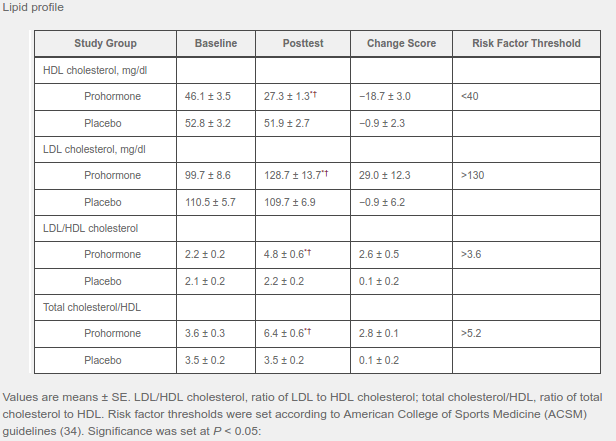
Beyond liver and kidney issues, 330mg 1-Andro (1-DHEA) caused healthy lipid levels to deteriorate.[5] Whether it's possible that a better delivery system that uses less active ingredient is any better is to be determined...
To put this in more realistic numbers, if you're taking 330mg/day of 1-DHEA as recommended by the manufacturer, your body only absorbs between 9.9-19.8mg of the active hormone! Guess who (or what) has to deal with the rest? The liver and kidneys!
Interestingly, even with those seemingly miniscule amounts absorbed, the test subjects still saw significant increases in lean mass and strength, and notable reductions in body fat.[6] Nobody is arguing that they're not effective... the question is, how do we make them safer and more cost-effective?
You may be thinking, ok, so even if the miniscule amount I absorb still yields massive gains, why bother with delivery systems? Well, your body still has to deal with the 94-97% of hormone that will exert unwanted (i.e. estrogenic) effects. Examples of this adverse effects included lowered LDL ("good") cholesterol levels in the rat study and similarly in the human study.[5,6]
What does all of this mean?
Simply put, if you're consuming 1-DHEA or 4-DHEA without a delivery system you can expect extremely low conversion of the compounds into their respective target hormones (1-testosterone and testosterone), and a potentially greater level of conversion into unwanted estrogenic hormones.
This means you can get decent gains from your cycle, but have to deal with a lot more potential negative consequences. Most of us would say it's not worth it to take these ingredients 'naked'.
Ok, so what are some of the possible delivery systems?
At this point, there are two tried-and-true methods, each of which we'll discuss next. And then we'll talk about the products that are receiving both treatments.
Cyclodextrin: Sugars to the Rescue
First discovered in the late 1800s, cyclodextrins are types of sugar molecules that are bound in large rings.
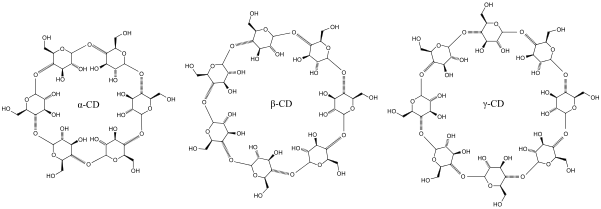
These large molecules are hydrophilic on the outside but hydrophobic on the inside. Image courtesy Wikimedia.
What's fascinating about some cyclodextrins is that they're hydrophobic on the inside but hydrophilic (water-loving) on the outside. This means that they can be complexed with hydrophobic compounds - and since they're large, the hydrophobic compound can literally fit inside them.
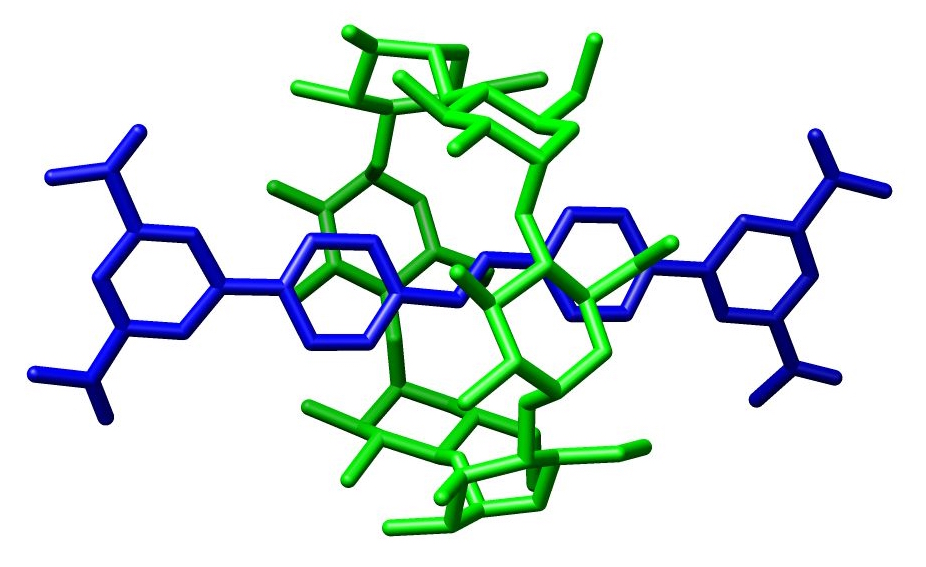
A cyclodextrin (in green) encapsulating a hydrophobic molecule (in blue). This idea can be applied in a supplement delivery system. Image courtesy Wikimedia.
With the more easily-digested water-loving part on the outside, it's easy to start imagining a true Trojan Horse scenario here, as the image to the right suggests. There, the cyclodextrin (in green) encapsulates the hydrophobic molecule (in blue).
So the idea is to take our digestive system's love for sugar molecules and use it to sneak in our hydrophobic ingredients. And it works:
Use in research
Cyclodextrins were first investigated in the 1970s and 1980s for pharmacological purposes,[7] and rat studies on cancer drugs were carried out in 1990.[8]
By 1995 and 1996, researchers began experimenting with sublingual testosterone in cyclodextrin with hypogonadal men, with successful increases in lean body mass in one study[9] and serum testosterone.[10,11]
In 2000, 2001, and 2004, the FDA granted GRAS status (generally regarded as safe) to three forms of cyclodextrins (Alpha-, beta-, and gamma-cyclodextrin).[12-14] Beta-cyclodextrin (HPβCD) is the one most readers will be most interested in.
This is a great start, but it has competition:
Liposome: The SEDDS Delivery System
Just like sugars, humans are also great at absorbing fat - much to our dismay when dieting. Knowing this, researchers began targeting fats for improved ingredient uptake.
The basic idea is to micronize the ingredients and encompass them in tiny lipid molecules, "tricking" your body into absorbing them into your bloodstream.
SEDDS, or "Self-Emulsifying Drug Delivery Systems," is one of the newer delivery systems to hit the dietary supplement market. The best research for our purposes was explained and carried out by Critical Reviews in Therapeutic Drug Carrier Systems:
"Self-emulsifying drug delivery systems (SEDDS) possess unparalleled potential in improving oral bioavailability of poorly water-soluble drugs. Following their oral administration, these systems rapidly disperse in gastrointestinal fluids, yielding micro- or nanoemulsions containing the solubilized drug. Owing to its miniscule globule size, the micro/nanoemulsifed drug can easily be absorbed through lymphatic pathways, bypassing the hepatic first-pass effect."[15]
In the study, the researchers compared the absorption rates of several difficult-to-absorb ingredients using different types of lipids. Some of the results are downright outstanding - especially when you look at the hormonal ingredients.
Compared to a non-delivery system, SEDDS improved overall bioavailability of progesterone up to 9x greater than non-delivery system administration. This is demonstrated in the attached graphic:[16]
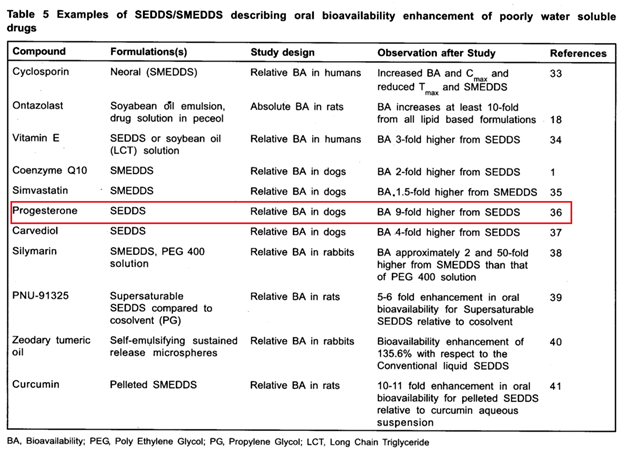
The hormone Progesterone had 9-fold better absorption in mammals when using an emulsified delivery system. Image courtesy Current Research & Information on Pharmaceuticals Sciences
Even though progesterone was used in the study, and that's not one of the ingredients we're interested in, it's still quite close. You'll still see the bioavailability is significantly improved compared to no delivery system. Doing the math, it means SEDDS yields 27-54% bioavailability compared to the 3-6% of non-delivery systems.
The Liposome used elsewhere
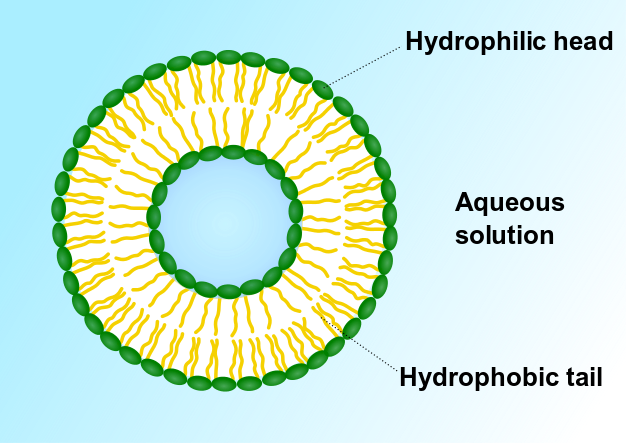
A similar strategy as cyclodextrin, but Liposomal treatment uses a lipid - most frequently phosphatidylcholine. Image courtesy Wikimedia.
The lipid encapsulation of a molecule is known as a liposome. The image to the right shows a similar situation to the cyclodextrin -- the outside is hydrophilic, ready for digestion, while the inside is hydrophobic, ready to encapsulate.
The most common lipid used is phosphatidylcholine.
We've discussed liposomal treatments in the past, with our articles on curcumin for joint pain, epicatechin (the potentially anabolic flavonoid from dark chocolate), and the plant steroid laxogenin.
Much of the refinement of this technology is owed to Indena,[17,18] a drug manufacturer in Europe whose Phytosome technology has been shown to improve absorption of several supplements including ginkgo biloba,[19,20] EGCG (the green tea catechin),[21] as well as our favorite form of curcumin, Curcumin Phytosome.[22]
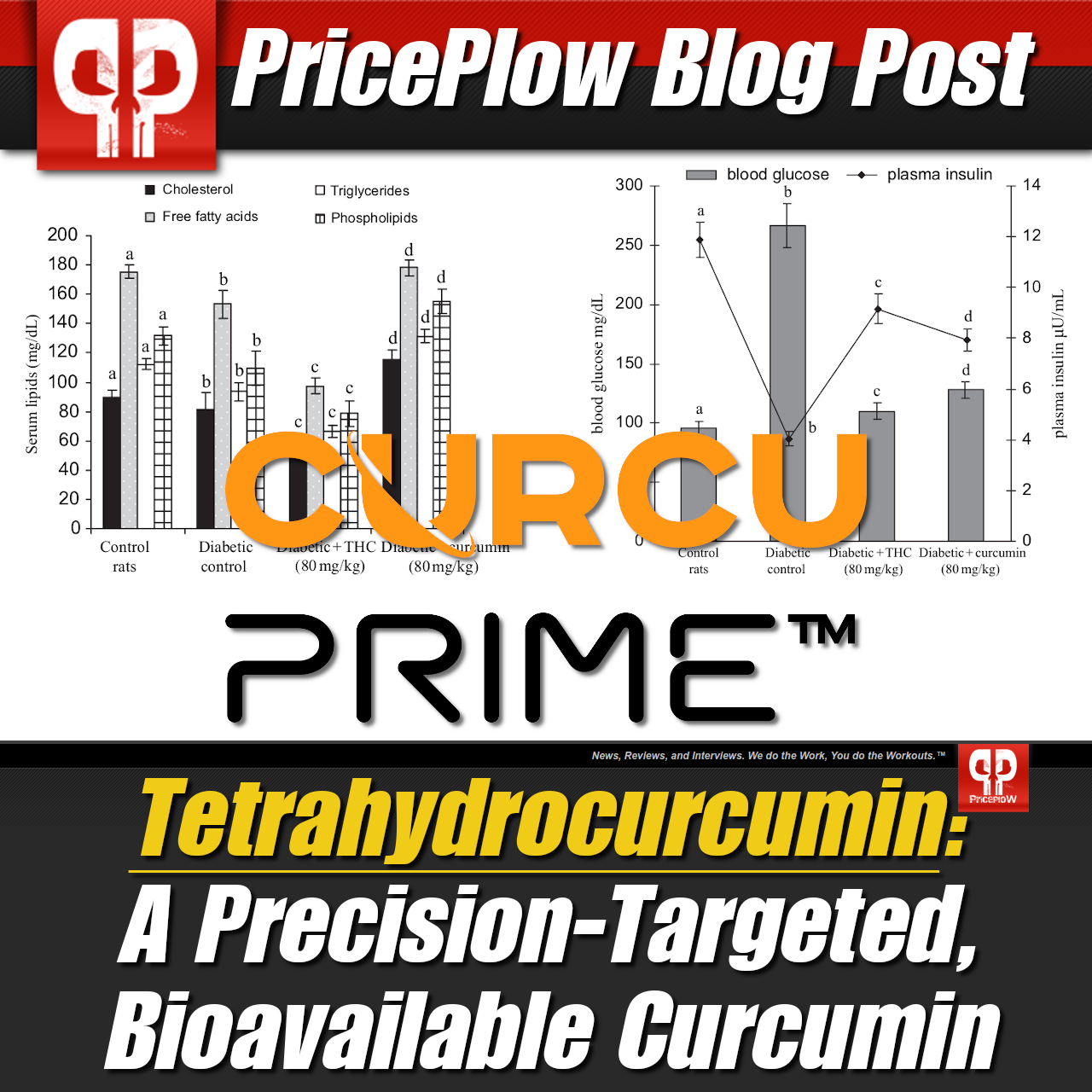
Some compounds, such as curcumin and silymarin from milk thistle are especially effective with the Phytosome treatment. And if you don't have this technology, there's always Tetrahydrocurcumin: A precision-targeted, more bioavailable curcumin metabolite that is more white than yellow!
The curcumin story is especially awesome: One human study comparing the absorption of Curcumin Phytosome (brand name: Meriva) against standard curcumin showed that the overall curcuminoid absorption was approximately 29x higher for Meriva compared to the unformulated curcuminoid mixture. Furthermore, the rate of absorption was also far quicker with Meriva the with the non-Phytosome curcumin.[23]
Human studies using Phytosome technology demonstrate enhanced bioavailability up to 29x greater than non-delivery system methods, yielding as much as 90% bioavailability!
Caveats with SEDDS on its own
Remember, the upper range of bioavailability assumes your body is perfectly converting everything, which is extremely unlikely and almost never occurs in vivo like it would in vitro. Still, SEDDS is a HUGE step up in terms of offerall effectiveness and results.
Getting back to the hormonal ingredients, users anecdotally experience greater results and fewer liver- and kidney-based side effects when using the SEDDS delivery method over no delivery method.
Plain and simple, SEDDS makes several supplements, drugs, and hormones more efficient. It provides a much higher rate of bioavailability and a far more effective cycle with same (or even smaller) doses.
So we have two "competing" technologies... but who says they have to compete?

Who says the technologies need to compete?
Hi-Tech Pharma’s Cyclosome Delivery System: The Best of Both Worlds
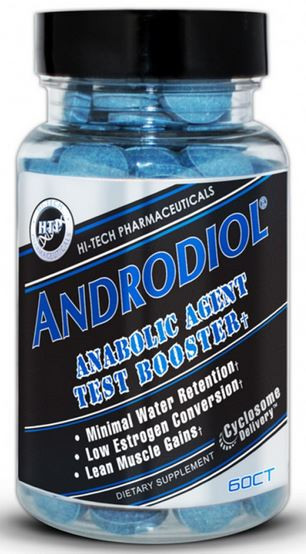
Androdiol from Hi-Tech Pharmaceuticals represents a new age of highly bioavailable aggressive muscle builders.
And finally, the reason we're here: What is going on with this Cyclosome technology that Hi-Tech Pharmaceuticals has been putting into their latest round of legal DHEA-metabolite PH supplements in early 2016?
As our friend in the above gif suggests: they're combining both technologies!
Hi-Tech Pharma's Cyclosome delivery system is the first 100% pharmaceutical grade delivery system to combine both cyclodextrins and liposomes in supplements for a "best of both worlds" situation.
Originally modeled after Indena's Phytosome tech, Cyclosome utilizes the same technology to increase the bioavailability and effectiveness of their new DHEA metabolite ingredients - but it first puts the ingredients in a cyclodextrin prior to lipid encapsulation. Absorption redundancy!
You can see this technology in use on several of Hi-Tech's products, as well as the new formulations coming from LG Sciences. Some that we've written about recently include:
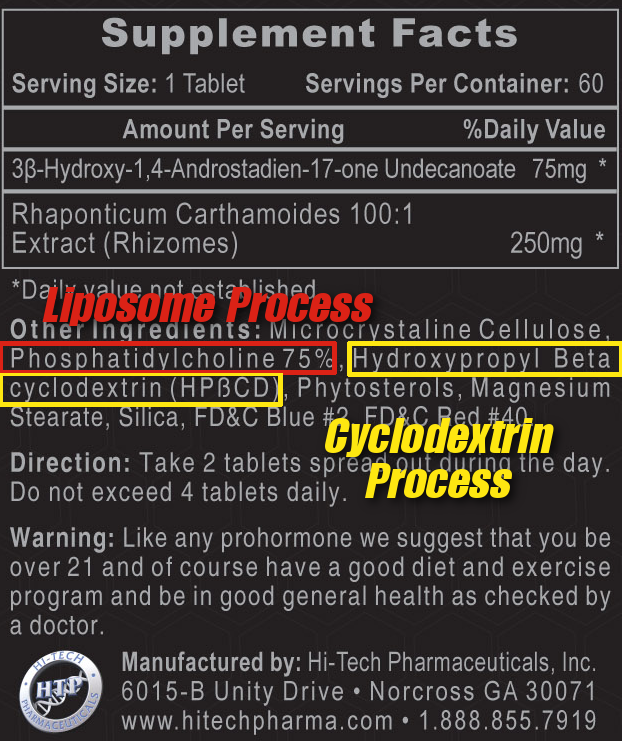
Note the Phosphatidylcholine 75% and Hydroxypropyl Beta Cyclodextrin (HPβCD). If you see these on the label of your Hi-Tech Pharma, LG Sciences, or APS Nutrition product... you're getting the Cyclosome experience
On those labels, you can see two different ingredients in the "other" section: Phosphatidylcholine 75% and Hydroxypropyl Beta Cyclodextrin (HPβCD).
The good news is that these supporting process ingredients are not being included in the amount of active ingredient. So as you can see from the Equibolin ingredients to the right, you're still getting 75mg of 4-Andro Undecanoate (note, however, that some of that 75mg is going to the ester, so it's still not a full 75mg 4-Andro).
Comparing the Three Delivery Systems
Warning: This section gets a bit "claim-y" and we cannot back up all of the numbers that are extrapolated here. Read with a grain of salt.
You've read the science behind the tech, so let's get back to some theoretical numbers. Here's a quick and dirty example showing all 3 systems side by side.
No Delivery System is abbreviated "NDS", SEDDS will be abbreviated as "SED", and Cyclosome technology will be abbreviated as "CST".
Taking our 100mg/day dosing protocol referenced above:
- NDS x 100mg (3-6% bioavailability) = 3-6mg 1-DHEA/4-DHEA in the blood
- SED x 100mg (3-6% bioavailability) x 9 = 27-54mg 1-DHEA/4-DHEA in the blood
- CST x 100mg (3-6% bioavailability) x >90% bioavailability = greater than 90mg 1-DHEA/4-DHEA in the blood (note: this is based upon how well Indena's technology works for curcumin, not DHEA, so consider this a completely theoretical number on the DHEA supplements for now)
Admittedly, these numbers were pulled from a forum post quoted by a Hi-Tech Pharmaceuticals forum representative / manager, Sir VaughnTrue.[24] We highly respect Vaughn and cite several of the same sources as he, but take the numbers as theoretical since the 90% one is based upon curcumin.
So, does this mean you need Cyclosome Delivery Technology for every single supplement you take, including creatine and beta alanine? No, not in the least.
In order to decide which delivery system is best or most "fitting" for you requires you to understand how the product you're purchasing is dosed, as it varies tremendously from one manufacturer to another. Remember, it works best for difficult-to-absorb compounds - the hydrophobic stuff. For instance, creatine is extremely bioavailable[25,26] (as well as dirt cheap), so it doesn't need this treatment.
More products are coming
It's clear that Hi-Tech put some serious investment into this. After they won a landmark battle with the FTC (Federal Trade Commission) over the usage of words such as "fat burner" and "thermogenic",[27] they have literally been in "industry takeover" mode. Part of that includes the purchase of LG Sciences and the ability to use and enforce LG's patents - many of which are DHEA-related.
We're not sure what's coming after the initial round of 1-AD, Androdiol, and 1-Testosterone, but things have changed several times over the past years.
We imagine that all of these products will have Cyclosome encapsulation as they're manufactured throughout 2016 - but to be sure, look for that Phosphatidylcholine 75% and Hydroxypropyl Beta Cyclodextrin (HPβCD) in the "other ingredients" part of the label.
Cyclosome currently represents the most effective way to increase bioavailability for ingredients such as DHEA and its metabolites. This means much more productive cycles, but with with more "production" comes more responsibility:
The open questions
What we don't know is this:
-
What doses will we need to get similar results to past PH compounds?
At 330mg, 1-DHEA blew the pants off of placebo[5]... but what about the lower-dosed Cyclosome-bound 1,4DHEA in Equibolin?
Let's say that you want to replicate the gains from the 1-Andro study cited above, where they used 330mg of 1-Andro / 1-DHEA.[5] However, we now know that the absorption rate is low and there were apparent side effects.
- First, how much of the 75mg 1-Andro Decanoate is going to the ester?
This, we can answer. If there is a 1:1 pairing of 1-androsterone (molar mass = 288.42442 g/mol) and decanoic acid (molar mass = 172.26 g/mol), then the total molar mass of 1-Andro Decanoate is going to be right around 460.68g/mol.
1-Andro being 288.42 of that, we know that 62.6% of 1-Andro Deconoate is actual 1-Andro -- or 47mg actual 1-Andro / 1-DHEA.
This isn't a bad thing - the ester provides better pharma-kinetics - but we're just pointing out that 330mg straight 1-Andro is a high dose whose cost and side effect profile we want to avoid as much as possible, while realizing similar results.
- Second, how much will the Cyclosome make up for that space lost to the ester?
- Third, will we be able to take less than the 330mg to get the same results, if Cyclosome is really that good?
We simply don't know those last two points yet.
What we do know that taking even 300mg of 1-AD each day would cost you quite a bit - a bottle would only last you 15 days, so for a legit 8-week cycle, you're looking at somewhere near $180 - quite a bit of money, and that isn't even including PCT, the rest of your supplement stack, and your grocery bill.
Update: Hi-Tech Pharma's 1-Testosterone is out, which contains 110mg 1-Andro (without an ester) per tablet, and also uses Cyclosome. This is the more aggressive product for experienced users who are bulking.
So let's get theoretical about it:
More Math: How good do we need Cyclosome to be?
1-AD has the same ingredient has the 330mg study cited above. But how much will it take with Cyclosome to get similar gains?
If Hi-Tech's forum "claims" are correct, 330mg 1-DHEA absorbed at 6% bioavailability = 19.8mg absorbed in the study. How can we match that?
Remember that one tablet of 1-AD has 47mg actual 1-DHEA, so a day's supply of two tablets brings 94mg.
Realistically, we need Cyclosome to bring us ~21% absorption to match that 19.8mg absorbed. Anything north of that is pure bonus.
We're not so sure about 90% absorption on the hormones (it definitely works that well for curcumin) until we see some in vivo studies, but we do think that this tech can likely achieve 21% given Indena's research on Phytosome-only preparations along with the SEDDS research on progesterone - and that's not even touching the cyclodextrin side of things..
For this reason, we're confident that most users can get what they want out of two tablets per day -- the standard recommendation -- and not need to run four per day. This will keep you at one bottle per month, and will allow you to assess while reviews come in.
In fact, beginners or smaller users might even be able to stretch one bottle out for two months and go with one tablet per day - but that's untested so far.
- First, how much of the 75mg 1-Andro Decanoate is going to the ester?
-
Will we need a legit prescription-strength post cycle therapy or on cycle therapy?
If Cyclosome is truly that effective, could it help eliminate enough of the side effects and help avoid additional liver, lipid, and kidney support?
The real answer is that it will depend on you and the anabolic you choose to use. For instance, the main ingredient in Androdiol converts to testosterone, which could then cause your body to reduce its own testosterone production, so this is definitely one we believe requires PCT.
As for several of the other compounds that will receive Cyclosome treatment, we're not completely sure, and for this reason, we're still recommending everyone see their endocrinologists and getting thorough blood tests before, during, and after their cycles so that they can get true prescription-strength PCT.
If the Cyclosome process is potent enough, then it could lead to partial HPTA shutdown (more absorbed = more testosterone = more conversion to estrogen, after all), thus requiring a strong anti-estrogen and more.
Serious business and serious personal decisions
Just realize that this is no joking matter nor is it something you half-ass. Getting into this world and taking these compounds is serious business, so don't go in without a gameplan and appointments already scheduled. Look before you leap.
Over time, we'll iron out some of these questions on the various compounds, and get some reviews going, as the products are only weeks old at the time of writing.
Hell, we're even willing to reimburse you for some blood tests if we can get some real-deal logs going (contact us if you're interested in participating). How else can we be sure?
Takeaway: This is happening
You may or may not be ready to take the leap into the world of hardcore hormonal supplementation, but if you are, then you need to make sure you're using the best quality available.
Love them or hate them, Hi-Tech Pharma's been taking over chunk after chunk of this industry. There's not much stopping the Hi-Tech train right now. And given how often they're audited by the FDA, we're confident that what they say is on the label is exactly what is in the label - a statement we sadly can't make about every company anymore.
Cyclosome not only ensures maximal gains on your cycle, but also mitigates the number of potential negative effects you'll experience while on it.
When you're ready to jump into the deep end, Cyclosome-based products give you the option for maximum results using the minimal effective dosage. This is not only great for your gains but also your vital organs and wallet as well.
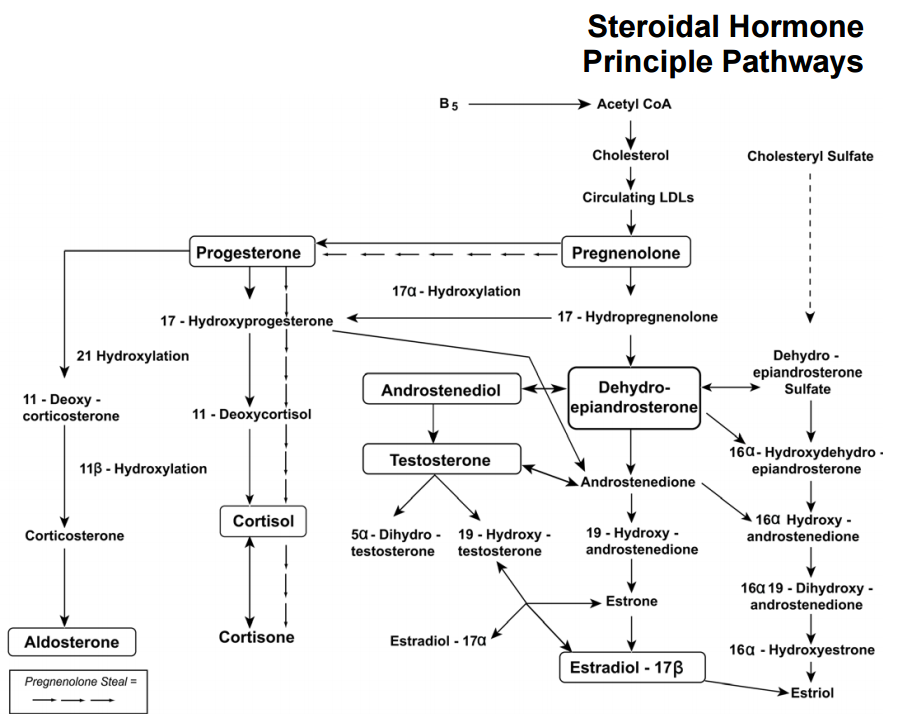
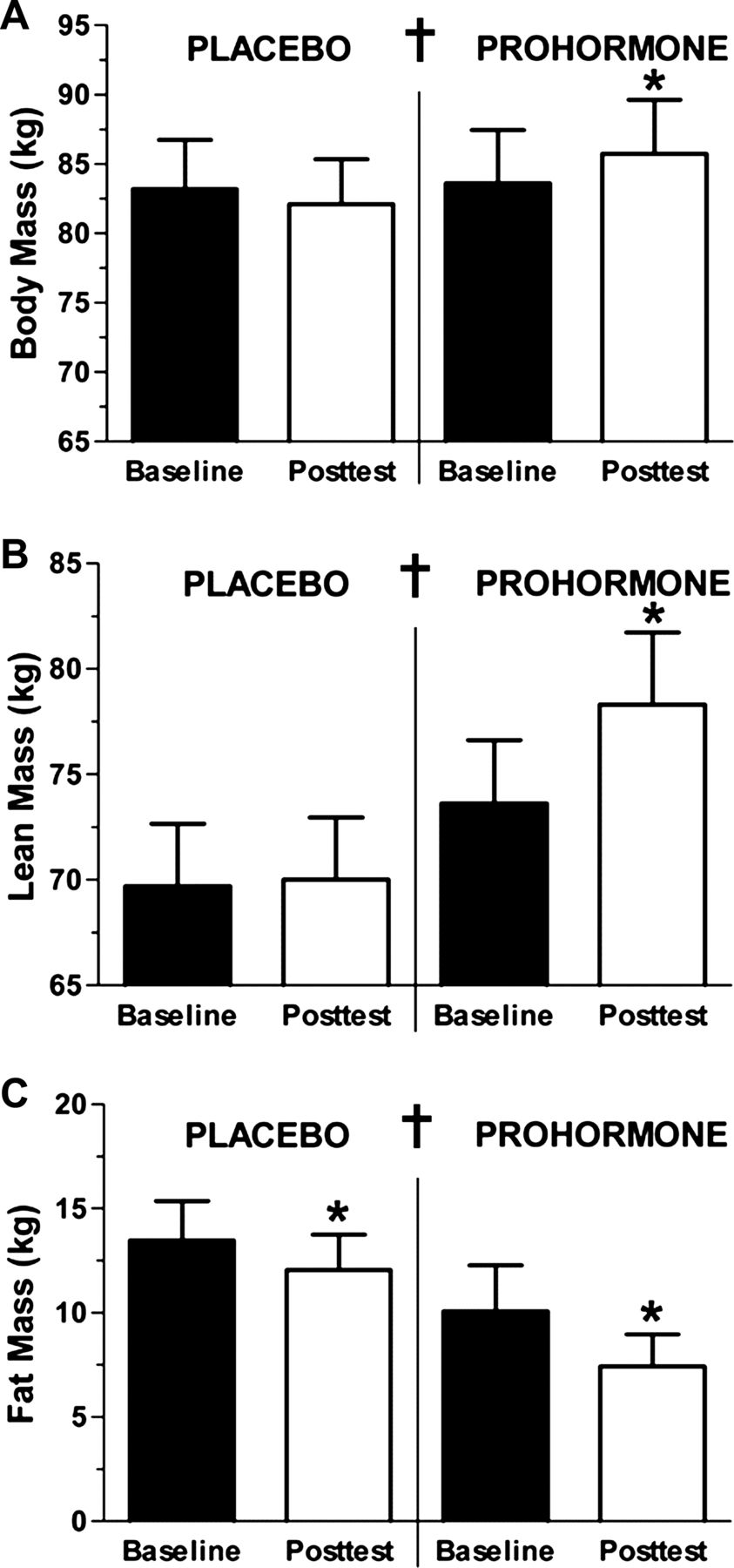
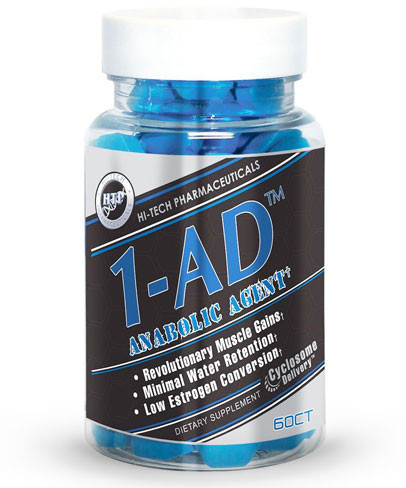
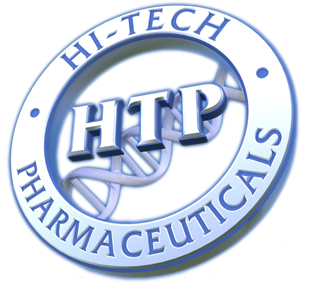


Comments and Discussion (Powered by the PricePlow Forum)